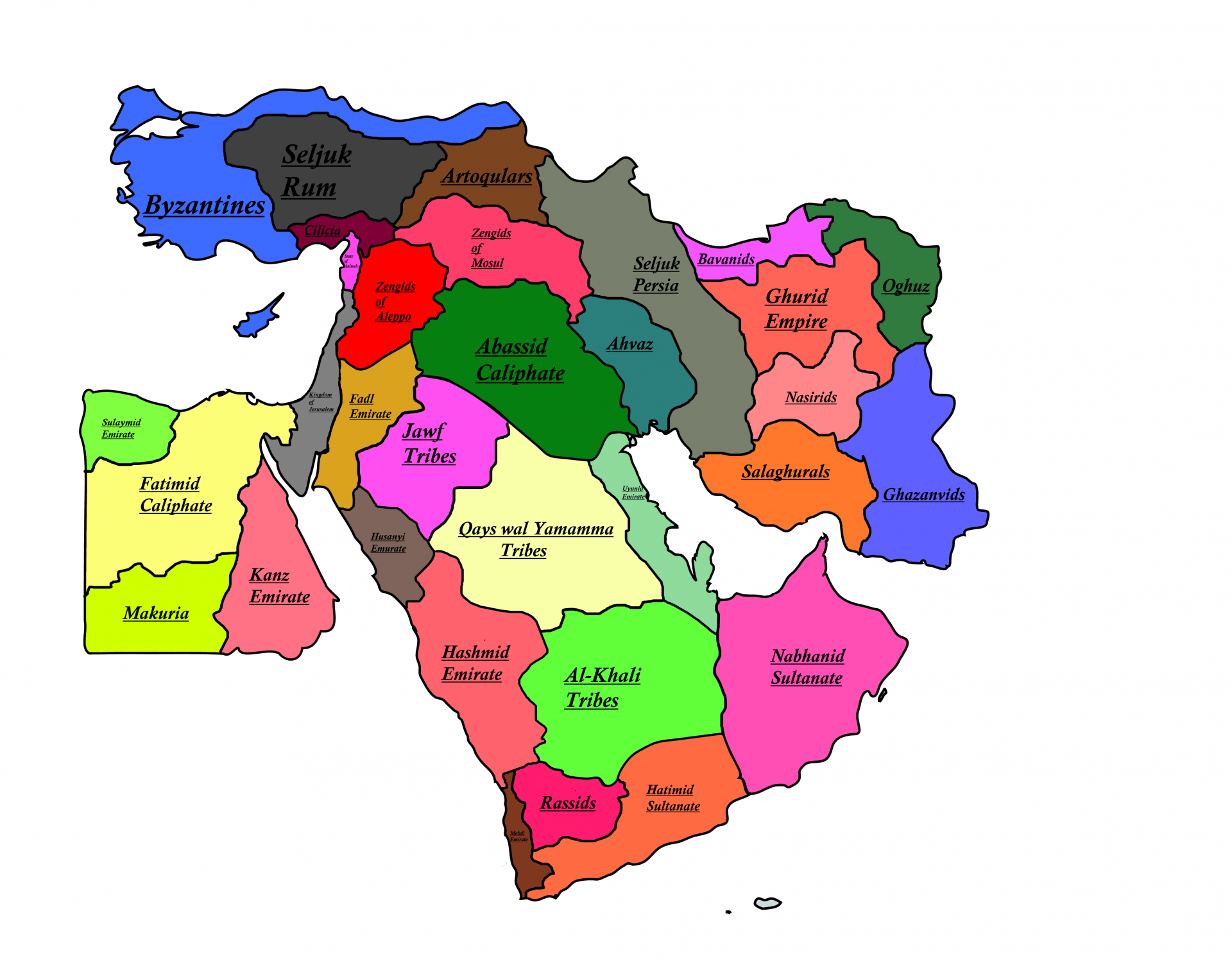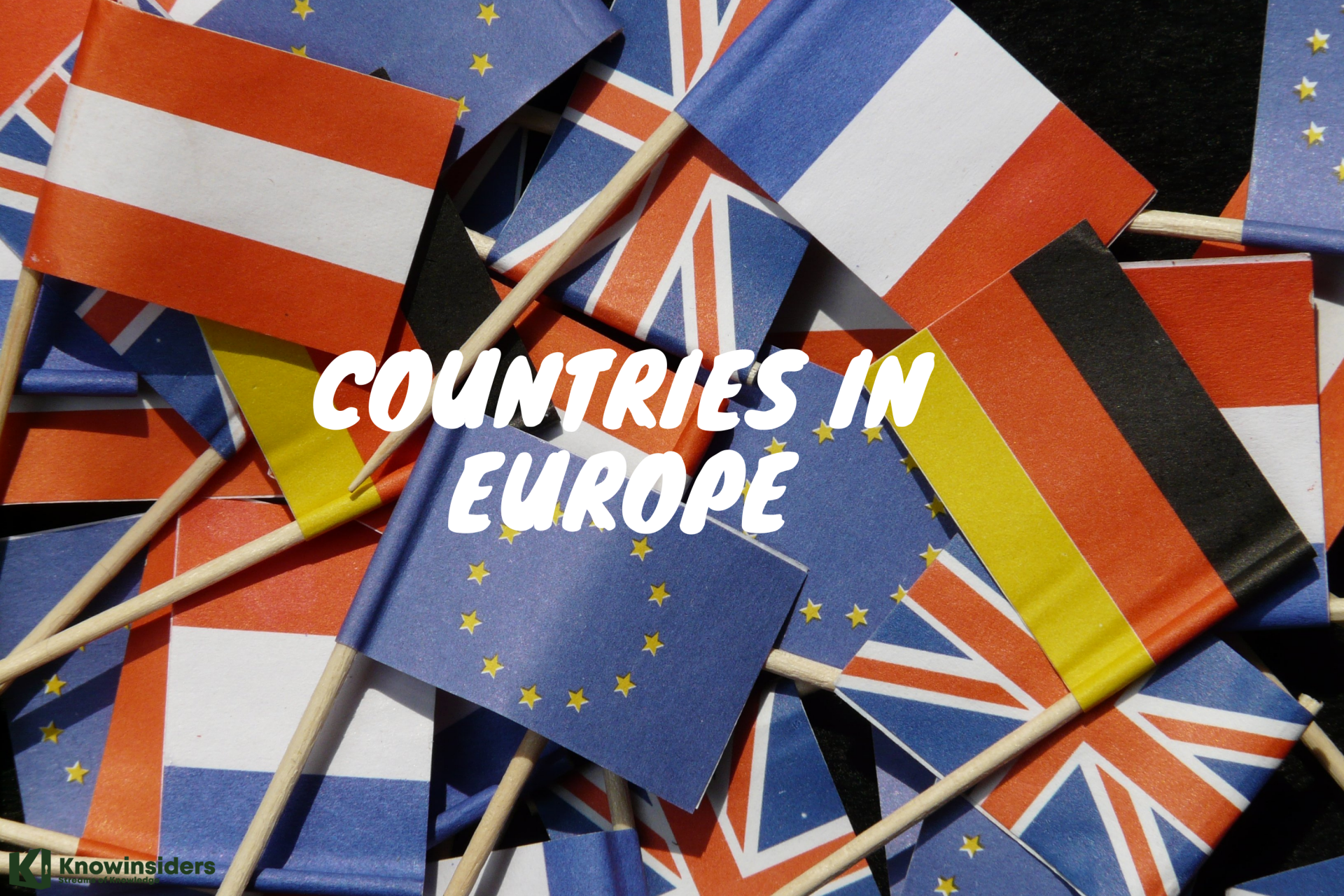List of Countries That No Longer Exist Today - 56 Former Nations
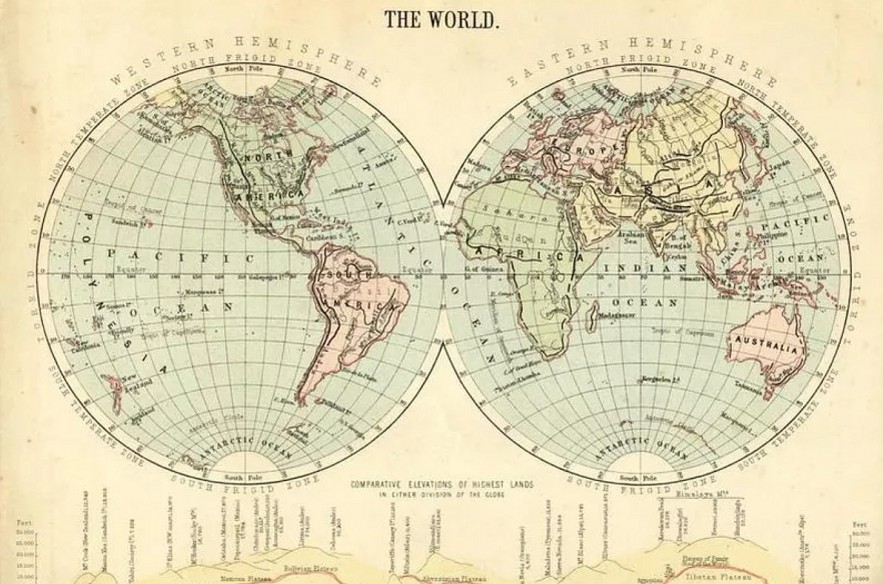 |
| The Full List of Former Countries in the World |
| Table of Contents |
In such a compact region, hundreds of different nations have emerged and vanished over the course of history. There are potentially thousands of former nations that no longer appear on maps, depending on how far back in time one looks.
Understanding history, geography, culture, and international politics is enhanced by learning about even a small number of countries that once existed but no longer exist.
How to Count a Country That no Longer Exists?
Few people give a hoot about whether or not a county "officially" exists or has "officially" ceased to exist.
However, we will only include countries on our list if they fulfill certain requirements. First, these regions functioned as a sovereign nation complete with a government and then faded from existence. We'll consider nations that emerged before 1800 and persisted into the modern era.
We also made sure to represent every continent with a handful of countries. The countries are organized into groups that reflect their geographic proximity to one another. When possible, we gave preference to countries that lasted the longest. Many countries have only existed for a year or two after a coup or failed uprising.
Why do Countries Cease to Exist - Fall and Rise
A nation's demise could occur for a variety of reasons. Some nations combine to create (or reform, as East and West Germany did) a single nation. The Union of Soviet Socialist Republics (USSR.), for instance, broke up into 15 smaller nations in the late 1980s and early 1990s. Some nations have been annexed, such as in 1845 when the fledgling Republic of Texas was absorbed by the expanding United States of America. Others have been utterly subjugated and assimilated, as was the case when Vietnam absorbed the Champa kingdom. Finally (and least disastrously), some countries have simply changed their name while remaining unaltered, as was the case in 1972 when Ceylon "died" and was reborn as Sri Lanka.
The alignment and continued existence of numerous nations throughout the world were severely disrupted by World War I and World War II. Alsace-Lorraine, a region that lies on the border of France and Germany, vanished in 1918 after World War I. The Weimar Republic evolved into Nazi Germany, both of which are now a part of the contemporary nation of Germany.
From 1988 to 1992, as the Soviet Union slowly disintegrated, 15 new nations in Asia and Europe were created. Along with it disintegrated Yugoslavia and Czechoslovakia, two post-World War I and World War II nations with close ties to the USSR. Yugoslavia disintegrated into Bosnia and Herzegovina, Croatia, Montenegro, Macedonia, Slovenia, Serbia, and Kosovo (which was battling for independence from Serbia in 2021) while Czechoslovakia became the Czech Republic and Slovakia.
The United Arab Republic was established in the Middle East in 1958 when Egypt and Syria united. The UAR later tried to expand by annexing North Yemen to form the United Arab States. In 1961, both the UAR and UAS were abolished.
Since the Native Americans and First Nations once had their own governments and tribal alliances but are now a part of contemporary nations like the United States, Canada, and Mexico, some people consider them to have historically been sovereign states. This idea is controversial because the US Constitution grants native tribes autonomy, but this autonomy is frequently not respected or is outright disregarded.
List of the Most Famous Nations That Have Ceased to Exist Throughout History
Abyssinia - Now known as Ethiopia
Austria-Hungary - A region that included Austria, Hungary, Italy, Poland, Romania, the Czech Republic, and the Balkans. Ceased to exist following World War I.
Basutoland - Now known as Lesotho
Bengal - Now part of India and Bangladesh
Burma - Now known as Myanmar
Catalonia - An autonomous region of Spain
Ceylon - Now known as Sri Lanka
Champa - Located in what is now Vietnam
Corsica - Now a department of France
East Germany - Reunited with West Germany to become Germany
East Pakistan - Now known as Bangladesh
England - Now part of the United Kingdom
Gran Colombia - Was once what is now Panama, Colombia, Ecuador, and Venezuela
Hawaii Was a country until annexed to the United States
New Grenada - Now known as the Republic of Colombia
Newfoundland - Now a Canadian province
North Yemen - United with South Yemen in 1990 to become Yemen
Ottoman Empire - Once included parts of Hungary, Russia, Turkey, the Middle East, the Balkans, and North Africa
Persia - Now known as Iran
Prussia - Once included parts of Germany and Poland. It was disbanded following World War II.
Rhodesia - Now known as Zimbabwe
Scotland - Now part of the United Kingdom
Siam - Now known as Thailand
Sikkim - Now part of North India
South Vietnam - Now known as Vietnam
South Yemen - United with North Yemen in 1990 to become Yemen
Southwest Africa - Now known as Namibia
Tanganyika - United with Zanzibar to form Tanzania
Texas - Was an independent country until annexed by the United States
Tibet - Now an autonomous region of China
Transjordan - Now known as Jordan
Union of Soviet Socialist Republics - Divided into 15 countries in 1988-1991
United Arab Republic - Now split into Syria and Egypt
Vermont - Was an independent country until it entered the U.S. as a state
Wales - Now part of the United Kingdom
West Florida (Republic of) - Included parts of Florida, Louisiana, and Mississippi declaring independence from Spanish rule, became a United States territory in less than 90 days.
West Germany - Reunited with East Germany to become Germany
Western Samoa - Changed name to Samoa in 1997 (There is no Eastern Samoa, but American Samoa lies to the east)
Yugoslavia - Split into six countries in the 1990s
Zaire - Now known as the Democratic Republic of the Congo
Zanzibar - United with Tanganyika to form Tanzania
The Complete List of the Former Countries in the World
1. Anguilla
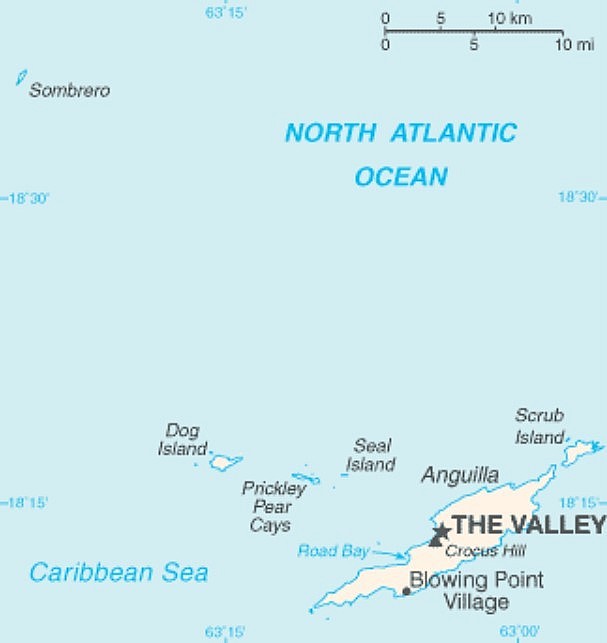 |
| The Republic of Anguilla was a short-lived, unrecognised independent state on the island of Anguilla. It lasted from 11 July 1967 until 19 March 1969, when British control was re-established. Sourse: CIA/Wikipedia |
It wasn't long before the Republic of Anguilla was a nation. From July 1967 to March 1969, a little over two years, the island of Anguilla established its own independent state. However, Britain never gave it full recognition.
The British government designated Saint Christopher-Nevis-Anguilla as a "associated state" in February 1967. As a result, Anguilla gained the ability to write its own constitution and exercise self-government to a large extent while remaining under Saint Kitts' political control. As a result of their displeasure, the Anguilla residents expelled all the Saint Kitts police officers from the territory.
Anguilla declared its independence, but the island's government was too disjointed to last for very long. On March 19, 1969, the British returned to take charge with a 300-person military force. Anguilla was eventually permitted to become a separate British dependency from Saint Kitts after being peacefully reclaimed. Ironically, Anguilla did not gain independence from Britain until 1983, while Saint Kitts and Nevis did.
2. Aro Confederacy (1690–1902)
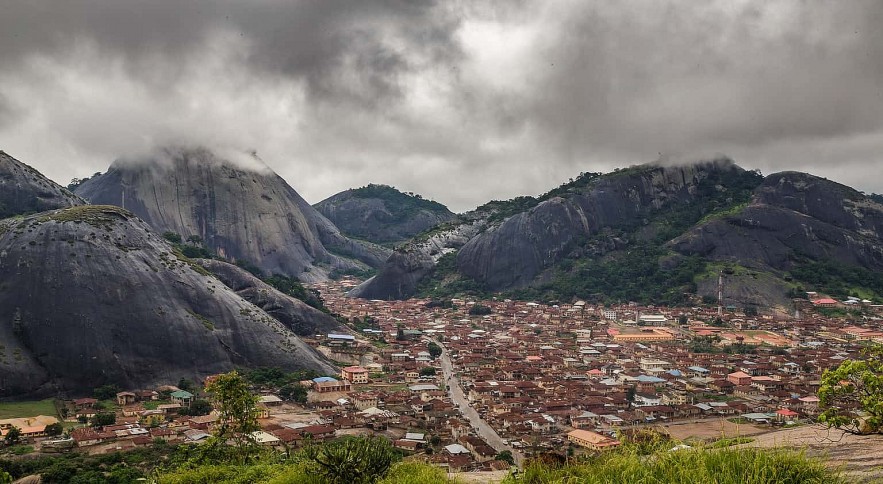 |
| Idanre Hills in modern-day Nigeria |
A significant economic and cultural hub for the area in and around present-day Nigeria was the Aro Confederacy. The Aro people of the area were incredibly skilled traders who established connections between numerous nearby communities through their travels and work. They combined their networks into the Aro Confederacy, which through its extensive network of Aro agents in the fields of religion, business, and diplomacy was able to exert control over the region as a regional power.
The Long Juju Oracle served as the Aro Confederacy's administrative hub. The nation's source of power in terms of religion, law, and politics was the oracle. In 1902, the British overcame and eventually conquered the Aro Confederacy.
3. Bengal
Although we typically associate the name Bengal with either tigers or cats, it was once the name of an Asian kingdom. It operated as a dominant regional empire with extensive trade networks from 1338 to 1539.
Bengals were renowned for sailing the seas with their substantial military forces, and Europeans thought very highly of them as trading partners. The Bengal kingdom produced an abundance of silk, cotton, and building materials despite the oppressively hot climate. They had among the highest living standards in the world in the 16th and 17th centuries.
In 1757, the British East India Company seized control of the region, which later became known as the Bengal Presidency under the British Raj. From the 1770s through the 1940s, Bengal experienced numerous famines as a result of the British's heavy taxation. Later, the region was split into the nations of Bangladesh and India.
4. Bohemia
Bohemia, shown here in red, was formerly referred to as the Czech Kingdom. It is essentially the great-grandmother of the modern Czech Republic. It was an early modern monarchy in Europe.
There were several kings who oversaw it when it was first a state within the Holy Roman Empire. Over the centuries, the boundaries of the Kingdom of Bohemia changed, but it was primarily comprised of present-day Moravia, Silesia, and Lusatia, as well as parts of Bavaria, Brandenburg, and Saxony. Numerous its kings were also chosen to serve as Holy Roman Emperors.
Bohemia joined the Hapsburg Empire in 1806, following the dissolution of the Holy Roman Empire. Up until 1918, it retained its name and independence. The newly formed Czechoslovak Republic was established in the aftermath of the dissolution of the Kingdom of Bohemia. The Czech language still bears striking similarities to that of medieval Bohemia.
5. Bornu Empire (1380–1893)
The powerful medieval Kanem-Bornu Empire was overthrown, giving rise to the Bornu Empire. It included what is now Nigeria, Chad, Niger, and Cameroon, and it was a sizable country. The Bornu Empire came into existence during a period of protracted military conflict that had destroyed its predecessor and was still plaguing the new Bornu Empire.
Bornu was defeated and dissolved in 1893 as a result of wars with its neighboring countries. In the 1900s, contemporary descendants of the rulers of Bornu were permitted to establish a traditional state within Nigeria.
6. Bora Bora
In the early 1800s, the independent Polynesian state of Bora Bora was founded. During the Jarnac Convention in 1847, it received its initial formal recognition.
It belonged to the same general department as nearby islands Tahiti, Huahine, and Raiatea. Because they spoke similar languages and had rulers who were wed, all the islands were connected culturally.
The islands of Tupai, Maupihaa, Maupiti, Manuae, and Motu One were also included in the Kingdom of Bora Bora, in addition to the island of Bora Bora. The final queen of Bora Bora, Teriimaevarua III, was forced to abdicate in 1895 after the island nation was annexed by France in 1888.
7. Burma
Do you know what a Burmese python is? The enormous snakes were first discovered in Burma, but Burma is no longer a country. Originally a British colony, the Union of Burma became a sovereign state in 1948.
The majority of the other former British colonies joined the British Commonwealth. However, Burma established a bicameral parliament with a Chamber of Nationalities and a Chamber of Deputies. However, the military staged a coup in 1962 in response to calls for federalism from some ethnic groups within the nation.
The official name of Burma was changed to Myanmar in 1989. It is, in fact, the same nation under a different name.
8. Basutoland
King Moshoeshoe I probably didn't anticipate the British to colonize his lands when he asked them for assistance in the 19th century in fending off invaders. But it really did turn out that way.
Basutoland, an independent African kingdom prior to 1868, changed its name to the Territory of Basutoland and became a British colony. The kingdom stayed intact for the following 100 years until it became Lesotho in 1966 after gaining independence from Britain.
Lesotho is currently governed by a constitutional monarchy that includes a royal family. It is one of only three nations in the world to be completely encircled by another nation, in this case South Africa, along with the Vatican and San Marino.
9. Champa Kingdom (192–1832)
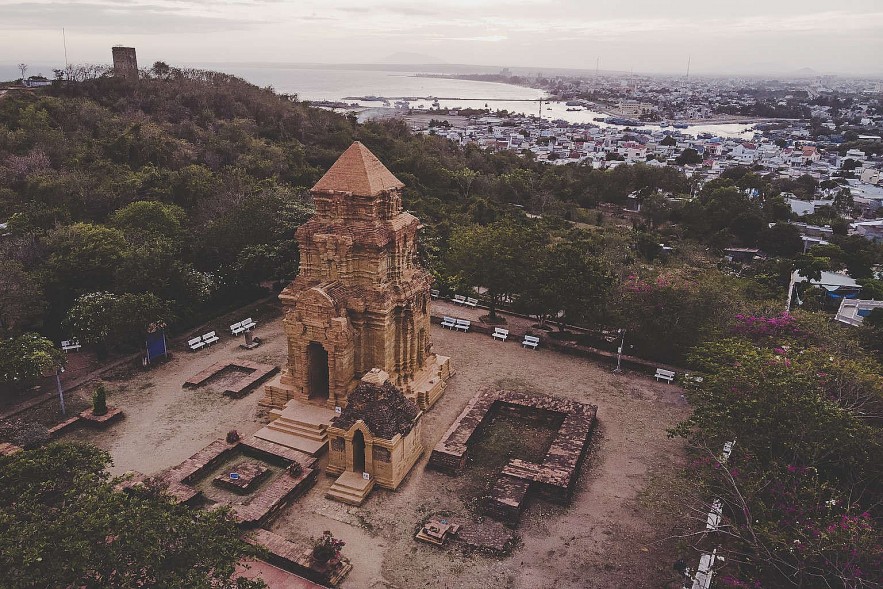 |
| Champa Kingdom |
It was founded by free-range, seafaring traders who exhibited a knack for diplomacy that would play a major role in most of Asian history. Throughout its history, Champa engaged in a number of protracted and challenging wars, including one with its neighbor Vietnam. The Vietnamese and Champa people developed a strong racial enmity as a result. Champa was ultimately defeated by Vietnam, and in 1832 the monarchy was abolished and Vietnam took control of the last remaining Champa territories.
The people of Champa persisted in their struggle for independence. But the French conquest of Vietnam would put an end to their efforts. To keep control of the region, the French took advantage of the racial tension there.
10. California
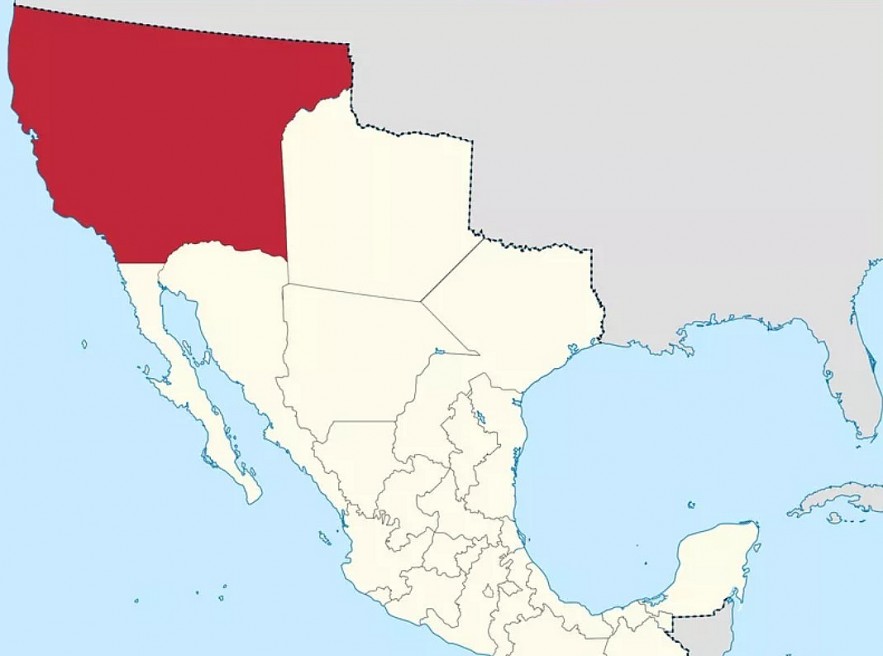 |
| Mexico's Department of Alta California, of which a small area north of San Francisco was controlled by the Bear Flag rebels. Sourse: Wikipedia |
Although Californians have discussed becoming their own nation, no one has given the idea much weight. However, California was a sovereign country in 1846.
A rebel state from Mexico, the California Republic was also referred to as the Bear Flag Republic. It was started by 33 American immigrants who were angry that despite not having received legal entry into the country, they had been threatened with deportation and prevented from renting or purchasing land.
Due to the concurrent start of the Mexican-American War, the Mexican government was concerned about the uprising, but the California Republic wasn't really a threat. Although its leaders did choose military leaders, that was all they accomplished. The republic only lasted a little over a month. The state flag of California, which still includes the same California grizzly bear that was on the flag of the California Republic, serves as the only physical reminder of the state's rebellious past.
11. Ceylon
The famous author of "The English Patient," Michael Ondaatje, is from the long-gone nation of Ceylon.
This island nation's history began with the arrival of the Sinhalese in the late sixth century B.C. Up until the 15th century, when a southern Indian dynasty seized control and founded the Tamil kingdom, that population lived peacefully on the land.
The conquest, however, was far from finished. Over the course of the following two centuries, the Portuguese and then the Dutch occupied Ceylon before handing it over to the British in 1796. Up until Ceylon's independence in 1948, the British held power.
Finally, the nation-state chose the name Sri Lanka, which translates to "great and beautiful island," in 1972. This is the name it still uses today, of course.
Sri Lanka is now one of the countries with the most diverse cultures in the world thanks to its fascinating history. The nation speaks three languages: Sinhalese, Tamil, and, thanks to British rule, English. Cricket, one of Sri Lanka's most popular sports, is also influenced by Britain.
12. Cherokee Nation
The Cherokee Nation had a recognized tribal government up until 1907 in North America. It was situated in the region that is now known as Oklahoma. Its inhabitants frequently referred to it as "The Nation," and it had deep cultural roots that the US practically wiped out.
The Cherokee Nation's land rights were terminated prior to Oklahoma becoming a state, forcing the Cherokee people to relocate. Cherokee people were occasionally taken as slaves; however, after the Civil War, they were freed. At the time, all Cherokee people were regarded as American citizens.
The Cherokee Nation was among the Native American tribes that the U.S. Supreme Court ruled had never been formally disestablished on July 9, 2020.
13. Cospaia (1440–1826)
 |
| Radda in Chianti in Tuscany, Italy. The territory of Cospaia |
The sole nation on our list that was produced on a technicality. Pope Eugene IV sold land to the Republic of Florence, which led to the creation of the Republic of Cospaia. A small portion of the land was unaccounted for due to a mistake in the sale agreement. In 1440, the now-stateless locals proclaimed their independence, and in 1484, the new country was formally admitted as a county.
People didn't have to pay homage to any king or queen because it was a republic in which all citizens shared sovereignty, and the area served as a Free Economic Zone. In 1826, Cospaia was split between Tuscany and the Papal States in exchange for a sizable sum of silver and the right to annually cultivate tens of thousands of tobacco plants. On some noteworthy occasions, the official flag of Cospaia is still flown in the area.
14. Czechoslovakia
Bohemia, Moravia, and Slovakia were united in Central Europe to form Czechoslovakia after the end of World War I in 1918.
The nation was partially absorbed into Nazi Germany from 1939 to 1945, and it ceased to exist as a state, though its government-in-exile continued to function. It joined the Eastern Bloc during the Cold War.
Numerous significant literary figures, such as playwright Tom Stoppard and author Milan Kundera of "The Unbearable Lightness of Being," were born there.
Following the Velvet Revolution, communist rule was overthrown in 1989. Czechoslovakia was divided into the Czech Republic and Slovakia shortly after, in 1993.
Thanks to their former selves, both are today's thriving nations with excellent historical attractions. For instance, the Proclamation of Independence of Czechoslovakia was read aloud in Wenceslas Square in Prague, Czech Republic, in 1918. It is a great place to include on a travel itinerary.
15. Dahomey (1600s–1904)
Dahomey was situated in what is now Benin. It was one of the most well-known African countries in the world at the time and a strong trading nation. Dahomey was a very militaristic nation, and a large portion of its trade power came from the capture of supplies and slaves during hostilities.
Up until its eventual conquest by France and establishment as a French colony in 1904, the kingdom had been weakened by military conflicts with Britain and France.
16. East Germany and West Germany
It's almost impossible to imagine how Germany, now a prosperous, united country, was once sharply divided.
Every student knows that after World War II, Germany was split into East Germany and West Germany, with the Soviet Union occupying the former and the United States and other Allied forces the latter. This division was firmly established in 1961 with the building of the Berlin Wall, which has since become a potent emblem of world conflict.
After nearly 30 years, the wall was finally taken down in 1990, which paved the way for reunification and the end of the Cold War.
A trip to Berlin today offers a fascinating look into this past. Not to be missed is The East Side Gallery, a section of the wall with over 100 large-format paintings that serves as a stunning symbol of hope.
17. El Stronato
Technically, El Stronato still exists, but it is now known as Paraguay. Between 1954 and 1989, when a dictator named Alfredo Stroessner was in power, the country was known as El Stronato for just 35 years.
He was an officer in the Paraguayan Army before leading a coup against Federico Chavez. After that, he triumphed in a "election" in which he was the only contender. The United States backed him due to his stance against communism, despite the fact that he long oppressed the Paraguayan populace.
El Stronato was a nation with few civil liberties, a lot of repression, and the practice of torturing political opponents. Stroessner offered exile to both dictators and war criminals during his eight consecutive terms in office. He was deposed in 1989 by General Andrés Rodriguez, a former confidant, and fled to exile in Brazil. The nation was then given the new name of Paraguay.
18. Fadhli Sultanate (1500’s–1888)
 |
| Eastern Haraz, Al-Hutaib in modern-day Yemen. |
On the tip of the Arabian Peninsula, in what is now Yemen, the Fadhli Sultanate was a significant Arab state. The Fadhli Sultanate was referred to as "one of the most powerful and warlike tribes" in the region by British explorers.
In 1888, the Fadhli Sultanate was placed under British protection, effectively losing its independence. When the sultan was overthrown in 1967, it ultimately came to an end. Later, it was incorporated into the People's Republic of South Yemen.
19. Hawaii
For many years, Hawaii was a sovereign state known as the Kingdom of Hawaii. However, it wasn't acknowledged as a separate country until the 1840s. The House of Kamehameha and the House of Kalakaua were the two ruling families in Hawaii. They engaged in trade with many contemporary countries, with the United States serving as their main trading partner for many years.
Unfortunately, the kingdom was not entirely at peace. In 1887, King Kalakaua was coerced by a band of anti-monarchist militiamen known as the Honolulu Rifles to ratify a new constitution.
In 1898, the United States annexed the nation. Queen Liliuokalani, his successor, attempted to advance a new constitution, but the Committee of Safety overthrew her. Both Hawaiian residents and foreign settlers, many of whom were Americans, made up the Committee.
In 1898, Hawaii became part of the United States, forming the Territory of Hawaii. The United States eventually offered an apology to the native Hawaiians for annexing the kingdom without their permission, but the concession is hollow given that Hawaii is still a U.S. state.
20. Hamburg (1189–1871)
The Holy Roman Emperor established Hamburg as a Free Imperial City during the middle ages, and it continued to function on its own until 1871. In 4000 BCE, the city's first permanent settlements were established. The Saxons didn't found the current city until the 500s CE. Before it was incorporated into the Republic of Germany in 1949, its status as a free city-state was contested and in flux.
21. Holy Roman Empire (843–1806)
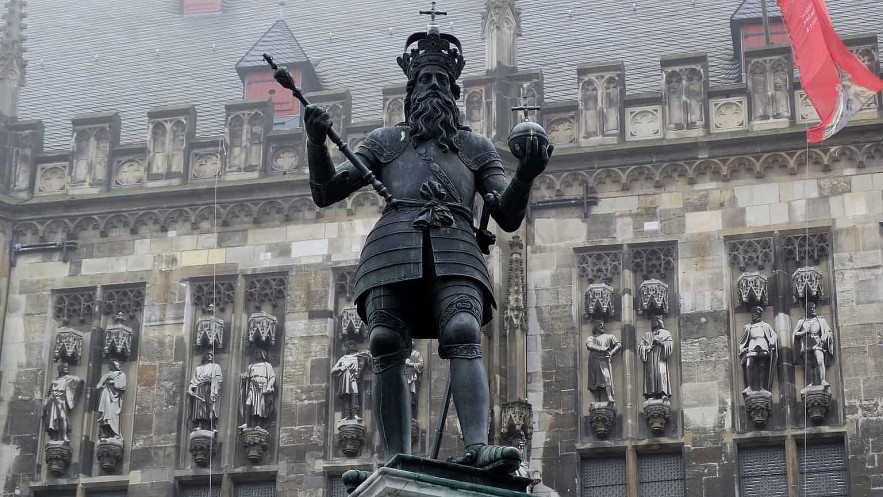 |
| Charlemagne (Charles the Great). The founder of the Hole Roman Empire standing at the market place in the center of Aachen ©Omm-on-tour/iStock / Getty Images Plus via Getty Images |
The majority of what is now Germany was once part of the Holy Roman Empire, a union of principalities and kingdoms. This empire was established in 843 by the Frankish king Charlemagne (Charles the Great), and it lasted until Napoleon Bonaparte dismantled it in 1806. It was the most powerful monarchy in all of Europe for a significant portion of this period. Following its collapse, the Holy Roman Empire was divided into a number of the most dominant countries of the era, including France, Prussia, the Austrian Empire, and others.
22. Imereti (1260–1810)
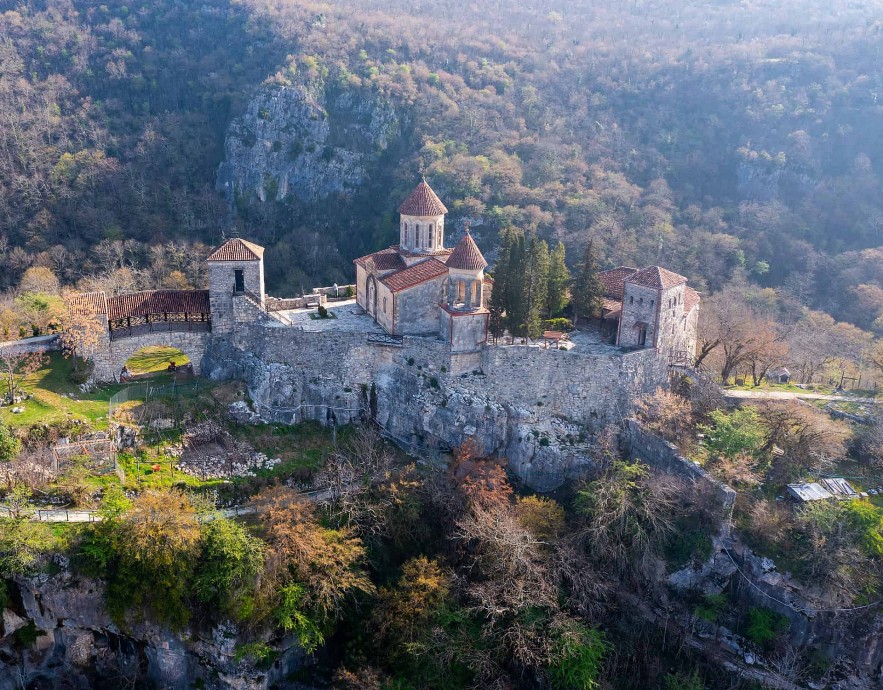 |
| Motsameta Monastery on rock in mountainous region of Imereti in Georgia |
The Kingdom of Imereti was one of the nations that emerged from the dissolution of the Kingdom of Georgia. Imeriti was essentially a battleground for hundreds of years between the armies of Georgia and the Ottoman Empire.
Imereti agreed to receive protection from the Russian Empire in 1804 in order to aid in defending its territory from invaders. However, in 1810, imperial forces finally took over control of the entire nation.
23. Iroquois Confederacy (1450–1867)
founded between 1450 and 1660 by a person only known as the Great Peacemaker. Five different Native American nations formed the Iroquois Confederacy, which its members referred to as "The Great League of Peace." Some academics contend that the Iroquois Confederacy was established as early as 1142.
North America's Great Lakes and the surrounding areas were part of the Confederacy. A Great Council made up of elders from all of the member countries oversaw it. For hundreds of years, the Iroquois Confederacy resisted British and American colonial efforts by establishing itself as a significant military and political force in North America.
The Iroquois territory was significantly diminished as a result of numerous wars, broken treaties, and hostile land grabs by Great Britain, Canada, and the United States. Other countries ceased to view the Iroquois as an independent nation during the 19th century. The Iroquois people continue to insist on their statehood, though, because the Grand Council is still in place.
24. Galicia (410–1833)
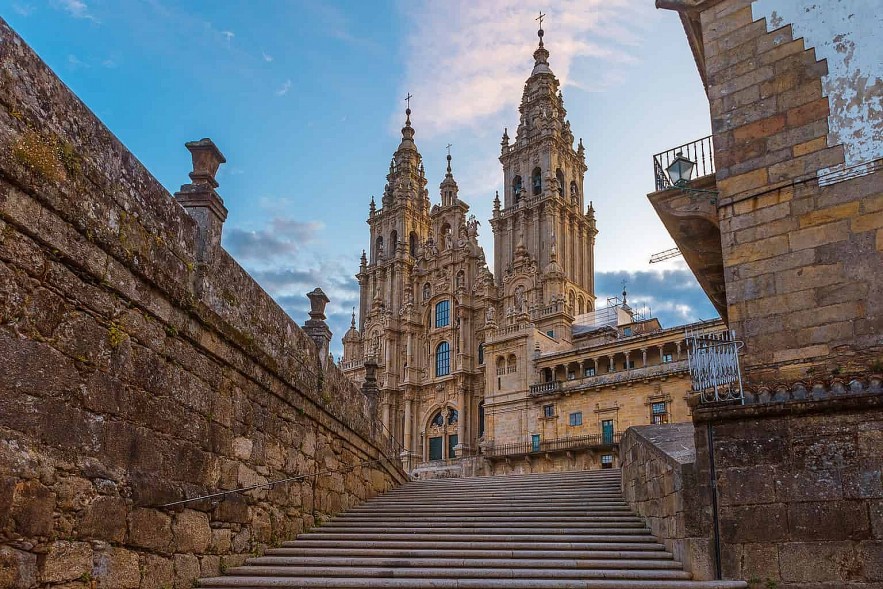 |
| Santiago de Compostela Cathedral in Galicia, Spain |
Galicia, a medieval state on the Iberian Peninsula, was established when King Hermeric, the head of the Germanic Suebi tribe, requested land from the Roman Emperor Honorius. The first nation to formally embrace Catholicism was Galicia.
The country survived numerous wars and conflicts over the succession to the throne. Even when Napoleon conquered it during the Peninsular War, it maintained its independence. In the end, it was dissolved, and Spain annexed it in 1834.
25. Garhwal Kingdom (823–1949)
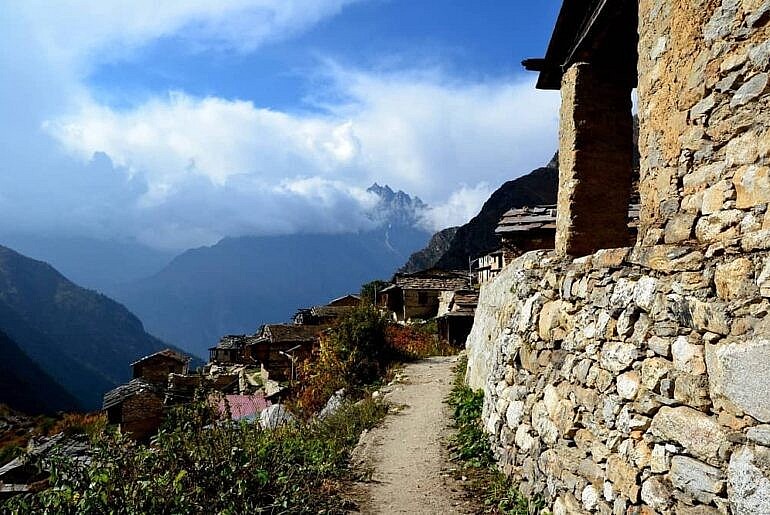 |
| Garhwal Himalayan mountain today |
In the North-Western region of present-day India, in the Himalayas, there was a kingdom called Garhwal. Following his conquest of 52 neighboring lands to found the country in 823, Kanak Pal's descendants held power over it for the following 916 years.
Once more, Garhwal was compelled to submit to British rule after a number of wars and conflicts with the British Empire. Up until 1949, when it was annexed by India, it was permitted to function as a kingdom.
26. Jaintia Kingdom (500–1835)
Modern-day Bangladesh and India were included in the Jaintia Kingdom's domain. Because it was a matrilineal kingdom with a mother-centered social order, it stood out from other societies in the region. The origins and early history of Jaintia are heavily influenced by legend and regional folklore. The Syiem Sutnga clan, who claimed ancestry from a divine nymph by the name of Ka Li Dohkha, was responsible for the rule of the Jaintia Kingdom.
The Jaintia Kingdom fought a number of wars against the British Empire, just like many of its neighbors in the area. In 1835, it was finally annexed.
27. Joseon (1392–1897)
Joseon, also referred to as Great Joseon, was the final Korean peninsula kingdom. Joseon had a peaceful and isolated existence compared to the other countries on this list. The Joseon era saw the creation of the majority of North and South Korea's contemporary cultures. This covers social mores, language, dialects, bureaucracy, and administration, among other things. The majority of what we consider to be "Korean" today is actually Joseon.
The Joseon dynasty declared itself to be the Korean Empire in order to counter the influence of China, Russia, and Japan, three foreign powers. Then Joseon vanished from history. Even though it was merely a name change, it marked the end of Korean independence as Japan took control of the country in 1905 and formally annexed it in 1910.
28. Kazakh Khanate (1465–1848)
The renowned Golden Horde, which was a descendant of Genghis Khan's Mongol Empire, was succeeded by the Kazakh Khanate. In 1465, Janibek Khan and Kerei Khan established it. Both were Genghis Khan ancestors. It persisted until the Russian Empire overthrew it.
Up until protracted conflict weakened it during the 17th and 18th centuries, the Kazakh Khanate managed to expand quickly while inspiring fear in all of its surrounding countries. Up until the last Kazakh cities were finally annexed in 1848, Russian imperial rulers were driven to conquer Kazakh lands by colonial policies.
29. Kongo (1390–1914)
One of the most powerful countries along Africa's western coast. Modern-day Angola, the Democratic Republic of the Congo, and the Republic of the Congo were all part of the Kingdom of Kongo's domain. Before Portugal invaded it in the 1800s, it was a sovereign country. Following this, the Portuguese ended the monarchy in 1914, which essentially destroyed the nation.
30. La Gran Colombia
There was once a larger country called La Gran Colombia where present-day Colombia, Panama, Venezuela, and Ecuador are located. Although it was only in use from 1819 to 1830, it was fairly potent. Although it was the biggest nation in Spanish America, European nations disagreed with its territorial claims.
Although its people were divided, its constitution designated it as a unitary centralist state. Some people preferred a federal, decentralized model, while others preferred a centralized one. Some people wanted to divide the nation into smaller republics. Simón Bolvar, a former president who is still regarded as a national hero, led the group that favored a more powerful presidency.
La Gran Colombia broke up in 1831 as a result of intense political strife between the two schools of thought and local conflicts. Venezuela, Ecuador, and Colombia were formed from it; Panama remained a part of Colombia until 1903.
31. Mesopotamia
What ties the wheel, math, and the concept of time together? They were all born in Mesopotamia, which at various points in history included a wide variety of ancient nations.
Mesopotamia, a reference to its location within the Tigris-Euphrates river system, roughly translates to "between two rivers." Deep roots run through the area. It has been around since the dawn of written history, around 3100 B.C.
Babylonia, the nation's most well-known city and capital, is regarded as the birthplace of literature and writing and was the location of the legendary hanging gardens, one of the Seven Wonders of the Ancient World.
Around the seventh century A.D., the area was destroyed. Its territory is now occupied by the majority of Iraq, eastern Syria, and southeast Turkey.
Iraq has recently made some ancient Babylonian ruins accessible to tourists. However, only 2% of the ancient city's remains have been discovered.
32. Mewar (734–1818)
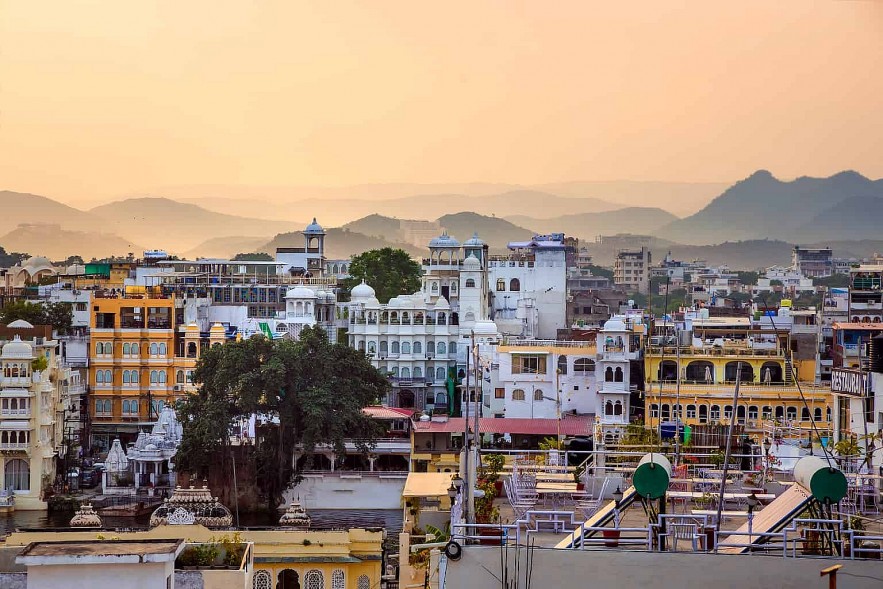 |
| Udaipur, also known as the City of Lakes, is a city in the state of Rajasthan in India. It is the historic capital of the kingdom of Mewar. |
This country, also known as the Udaipur State, included parts of modern-day Pakistan and India. Mewar and the Mughal Empire engaged in a number of protracted and bloody wars. The Kingdom of Mewar eventually became so weak from ongoing hostilities with its neighbors that it petitioned the British Empire for assistance in order to survive. In exchange for British rule, the British East India Company agreed to defend the impoverished country.
33. Mughal Empire (1526–1857)
The Mughal Empire was a major military and economic force in the area, spanning a large portion of what is now Afghanistan, India, and Bangladesh. The Mughal Empire built many of the local UNESCO World Heritage Sites. These include the Taj Mahal, the Shalamar Gardens, Fatehpur Sikri, Red Fort, Agra Fort, and Humayun's Tomb.
The British East India Company severely damaged and ultimately destroyed the Mughal Empire in 1857.
34. Mysore 1399–1948)
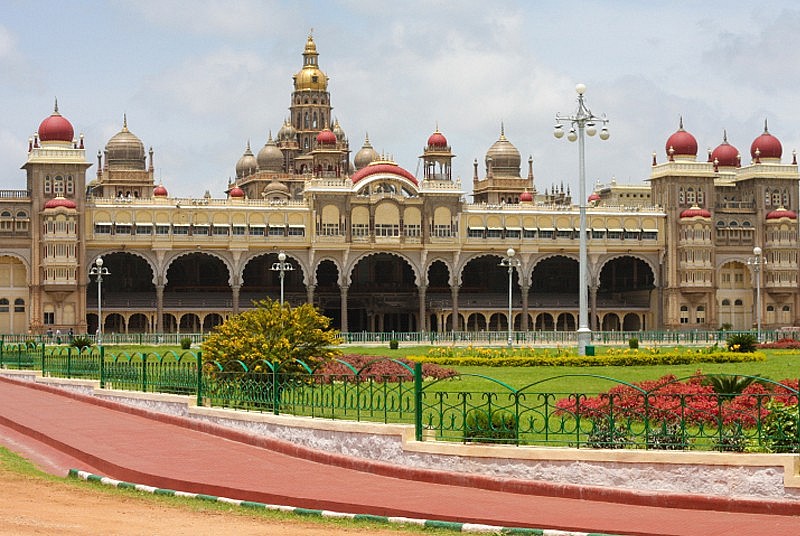 |
| Mysore Palace in Mysore, Karnataka, India. It was the royal residence of the Wadiyar dynasty and the seat of the Kingdom of Mysore. |
The monarchs of the Kingdom of Mysore rose to fame for supporting the humanities and sciences. Four defensive wars were fought by the Kingdom of Mysore against the British Empire. The majority of Mysore's territory was lost after their defeat in the fourth war, which effectively put an end to their rule over the Indian subcontinent. After 1831, the Kingdom of Mysore was directly ruled by the British until it was merged into the country of modern-day India in 1947.
Rocket science, music, and art are still influenced by Mysore institutions and their contributions to science.
35. Naples (1282–1816)
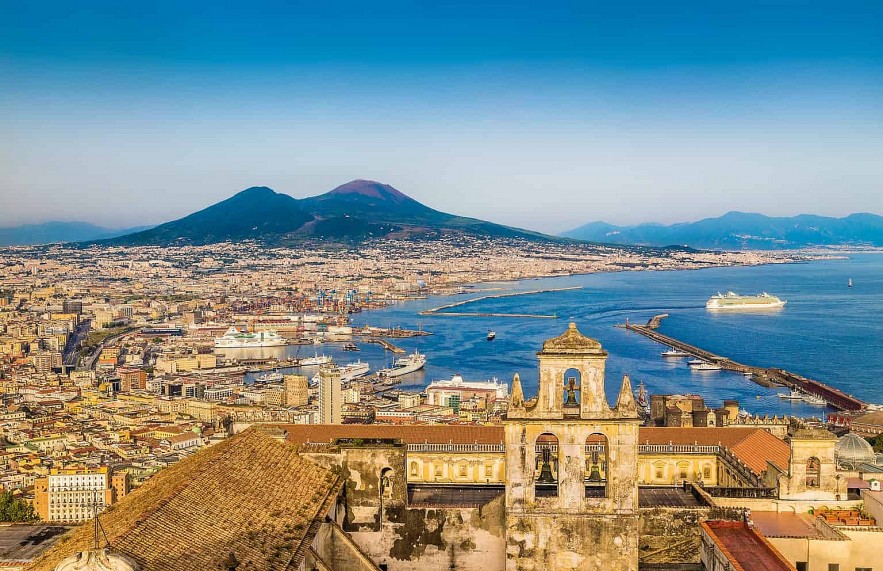 |
| Scenic picture-postcard view of the city of Napoli (Naples) in Campania, Italy. ©bluejayphoto/iStock via Getty Images |
The southern part of the Italian Peninsula was ruled by the Kingdom of Sicily until the island of Sicily was conquered by Aragon leaving the mainland territory to rule itself as the Kingdom of Naples. As a result of the Napoleonic wars, the mainland country of Naples reunited with the island of Sicily in 1816 to form the Kingdom of the Two Sicilies.
36. Neutral Moresnet
There once was Neutral Moresnet, a tiny nation in Europe that was barely larger than a square mile. The only two zinc mines on the continent, Vielle Montagne, belonged to it, and it had its own flag and currency.
Napoleon's Empire was divided up by the winners after it was overthrown in 1814. A co-owned state was established in 1815 after the United Kingdoms of the Netherlands and Prussia were unable to reach an agreement over this small village that lay on their respective borders.
Belgium replaced the Netherlands in 1830. There were attempts to make money when zinc ran out in the late 19th century through casinos and the issuance of commemorative stamps. However, nothing took. Even local Wilhelm Molly's attempt to make Neutral Moresnet the first nation to speak Esperanto failed.
As a result of Prussia's defeat in World War I, it joined Belgium.
37. Newfoundland
Although it still exists, Newfoundland is now a province of Canada along with its neighbor Labrador. It was an independent country before joining Canada.
The island was first inhabited by the Beothuk Indians and was found by the Vikings in the latter part of the tenth century. The Europeans followed in their footsteps around 1600, looking for the rich fishing grounds of the icy Atlantic. A diverse group of Scottish, French, Irish, and English settlers established independent outposts on the territory, which were merged in 1907 to create the Dominion of Newfoundland, an independent sovereign state.
The nation's economy was in ruins following the Great Depression, and in 1934 it voluntarily became a British colony. It was finally incorporated into Canada in 1949.
Newfoundland is still well-known for its caviar and ecotourism endeavors, despite the fact that the cod stocks that once supported the local economy have been severely depleted in its waters.
38. New Granada
The New Kingdom of Granada, also known as New Granada, was a group of South American Spanish colonial provinces. It was formerly a part of the Viceroyalty of Peru, but in 1549 the Audiencia of Santa Fe was established as a separate kingdom. It joined the Viceroyalty of New Granada in 1717.
Later attempts to establish independent states were made, but ultimately the viceroyalty and kingdom merged to form the United Provinces of New Granada. In 1816, Spain retook the area, putting an end to New Granada.
39. Ottoman Empire
From the 14th to the 20th centuries, the Ottoman Empire was a state that controlled a sizable portion of Southeast Asia, Africa, and Europe. It was established around 1300 A.D. by Osman I, a Turkish tribal leader, and is also referred to as the Turkish Empire.
The Ottomans established a transcontinental empire after conquering the Balkans in 1354. They were also in charge of overthrowing the Byzantine Empire. Eventually, the Ottoman Empire expanded to encompass much of northern Africa, the modern-day Middle East, Hungary, Russia, and Turkey.
Over the centuries, its influence gradually diminished. After World War I, when Turkey proclaimed its independence, it completely vanished.
40. Papal States (752–1870)
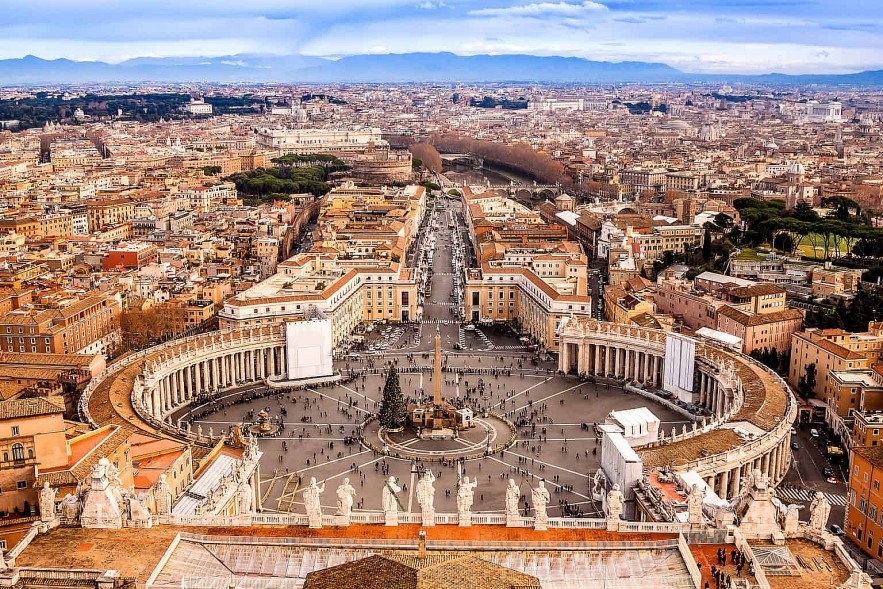 |
| Vatican City - Capitol of the Papal States |
The realm recognized by the Pope. The Pope was the most powerful secular ruler on the Italian peninsula during the Renaissance, in addition to being the head of the Christian religion in all of Europe. The Papal States expanded primarily as a result of land donations made by strong monarchs in exchange for the Pope's favor or as part of clever political pacts. During its 1870 conquest to unify all of the Italian territories, the Kingdom of Italy destroyed it. The Papal States vanished at this point. Up until the establishment of the Vatican City in 1929, the pope was essentially a prisoner of Italy.
41. Persia
In a technical sense, Iran is still considered to be part of Persia. From the Mediterranean Sea all the way to India, there was the Persian Empire. One of the biggest empires in human history was the first Persian Empire. Starting in 550 B.C., Cyrus the Great was in charge of it.
The Persian Empire thrived as a center of human endeavor for more than 200 years. Culture, science, and technology all flourished. Alexander the Great later conquered the empire, but the Persian Empire persisted for several centuries under various dynasties.
Iran's name didn't come to be associated with Persia until around 1935. Iran is merely a formal name for Persia, but since most people are unaware of the nation's deep historical roots, we counted it.
42. Prussia (1525–1871)
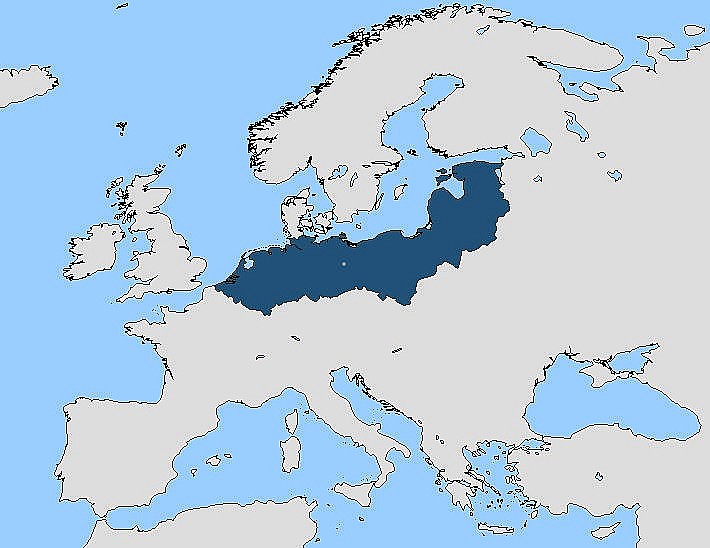 |
| The Kingdom of Prussia |
The Kingdom of Prussia existed until 1947 and can be traced back to the Middle Ages. Despite being named after the Prussian region, it was a German Kingdom that at its height included more than half of contemporary Germany, all of contemporary Western Poland, and portions of contemporary France, Belgium, Denmark, and Lithuania.
When it was still a Kingdom made up of independent principalities in the 18th century, Frederick II led Prussia to greatness. Similar to the four nations that now make up the United Kingdom, these had the same status as nations.
Through wars with Napoleon, the Danes, the Austrians, and the French, the Kingdom managed to survive. However, it was unable to survive the world wars of the 20th century. The Prussian monarchy was abolished after Germany was defeated in World War I. Following the end of World War II, Prussia's territory was divided up and the once-dominant state was completely abolished.
Even though Prussia is no longer a sovereign state, Prince Georg Friedrich Ferdinand retains the title of king despite being a monarch without a realm to rule. He currently resides in Germany's Hohenzollern Castle in Bisingen.
43. Ryukyu Kingdom (1429–1879)
In the seas off Southeast Asia, Ryukyu was a significant trading hub and maritime power. It was so influential in the regional trade networks that China even gave them ships to safeguard their commerce and permitted Ryukyu citizens to attend the Imperial Academy in Beijing. For hundreds of years, goods from Japan, China, and the Arab world were shipped through the ports in Ryukyu. Their trade power didn't start to wane until the Portuguese arrived.
The Japanese Empire eventually overran and occupied Ryukyu. In Tokyo, the last king of Ryukyu's lineage still resides.
44. Sikkim
According to legend, a Yeti footprint from 1948 was discovered high in the snow-covered Eastern Himalayas. The Yeti is also known as the Abominable Snowman. It is debatable whether the elusive creature actually showed up here. The country where it was allegedly spotted is a fact that cannot be contested.
This region was the Kingdom of Sikkim at the time; it had been a sovereign monarchy since 1642. After a referendum in 1975, it merged with India and was made an Indian protectorate in 1950.
The population of this region of contemporary India is made up of native Sikkimese as well as speakers of Nepalese, Tibetan, and Hindi. These original inhabitants regard Sikkim as the home of the chogyal, temporal and spiritual kings who still rule their world, and they revere the mountains as gods.
45. Sultanate of Sulu (1405–1915)
Parts of present-day Borneo and the Philippines were under Sulu's control. After marrying a local princess and becoming the first sultan of Sulu and the area's local spiritual leader, it was established by the Arab-Muslim explorer Sharif ul-Hashim.
Sulu fought against Great Britain, Spain, and the United States to defend its docility and territory. When the Philippines annexed the remaining portion of the country in 1915, the United States forced the Sultan of Sulu to give up all of his territory and religious authority.
46. Sultanate of Tuggurt (1414–1871)
A sizable portion of modern-day Algeria was covered by Tuggurt. The Hafsid Dynasty and Algiers were just two of the local authorities that Tuggurt battled for its independence from. They would periodically rise up in revolt and refuse to pay tribute to the local authority before being brought back under control.
The Tuggurt population resisted the French attempts to abolish the Sultanate in 1854 and again in 1871, when the country was finally and irrevocably destroyed.
47. Tavolara
Tavolara, a tiny limestone island off the northeastern coast of Sardinia, once held the title of smallest kingdom in the world. It is about half a mile wide and just under four miles long, and was found by Giuseppe Bertoleoni in the late 18th century. He anointed himself king right away, and even though the dominion has never been officially recognized, that title has been passed down through the generations.
The only restaurant on the island is run by the reigning monarch, Antonio, who is Bertoleoni's great-great-grandson. Visitors who come to the island love to dive in the waters because they are full of marine life. Occasionally, a Pinna nobilis, a rare giant clam, can be seen.
Tavolara is currently a protected area of the Italian national marine reserve, while other areas of the island are owned by NATO and designated for military use.
48. Texas
In terms of nations, the United States is a young one. Texas wasn't even a state until less than 200 years ago. Originally, the Republic of Texas belonged to Mexico. In 1835, during the Texas Revolution, it proclaimed its independence. The United States recognized the new nation in early 1837, despite the fact that Mexico did not treat it seriously.
Texas residents were referred to as Texians rather than as Texans. For many years, their exact border was in dispute, with Texas insisting that the Rio Grande served as their southern border. It didn't really matter in the end. Texas only lasted as a sovereign state for about ten years.
Texas became the 28th state in the union when the United States annexed it on December 29, 1845. The border dispute between Texas and Mexico became Uncle Sam's issue, which led to the Mexican-American War the following year.
49. Tibet
A significant portion of the Tibetan Plateau is covered by the East Asian region of Tibet. Along with a number of other ethnic groups, it is regarded as the homeland of the Tibetan people. Still residing in the area are the Sherpas, who are renowned for guiding Western hikers through Mount Everest's dangers.
Tibet, which is perched amidst the Himalayas and has an average elevation of 14,000 feet, is the highest populated region on Earth. Tibet became a sovereign state starting in the seventh century. But in 1950, China invaded it. Despite Tibet's attempts at insurrection, their government was formally overthrown in 1959. It is now referred to as China's Xizang Autonomous Region.
There is still some political unrest in the region, as evidenced by unwarranted arrests and reports of Tibetan activists being tortured. Buddhism, which still predominates in Tibet, has an impact on the region's culture and art. Yak meat and butter tea, two of the most well-liked foods there, are likely to be on the menu if you ever travel to the region formerly known as Tibet.
50. Tokugawa Shogunate (1603–1868)
Japanese military rule and the start of the renowned Edo period. Tokugawa Ieyasu established the shogunate after he overcame his rivals in the brutal and bloody Sengoku period civil wars. Japan was governed by the shoguns (warlords) of this regime under a very rigid feudal system. Additionally, they followed a policy of isolation from the outside world.
As a result, the shogunate's urban and economic growth was extremely rapid. The Tokugawa shogunate was Japan's longest-lasting era of peace and political stability. Because of this stability, Japan's art and culture were able to flourish and have a significant impact on modern Japan.
51. Tripolitania
Tripoli, the name of the current capital of Libya, was once an independent republic with a complicated past.
Tripolitania, which covered an area of about 500 miles, was bordered by the Mediterranean Sea, the Steppes of Ghibla, the Jebel mountain range, and the Giofra desert. Before the Ottomans annexed Tripolatinia to their Empire in the 16th century, the Phoenicians, Romans, Vandals, Arabs, and many others attempted to rule it.
Ahmad Karamanli, the local governor, was acknowledged as a hereditary pasha in 1711; his dynasty ruled until roughly 1835. In 1912, the region was given to Italy as a result of the Italo-Turkish War. Italians encouraged their citizens to emigrate because they desired more land.
Tripolitania had ceased to exist as a separate state by 1939. With Tripoli serving as its capital, it was incorporated into the Italian colony of Libya.
52. USSR
The Soviet Union, also known as the Union of Soviet Socialist Republics, was a substantial socialist state that occupied much of Europe and Asia for close to 70 years. It was established in 1922, and it rose to become the world's most powerful communist nation very quickly.
The USSR, regarded as a superpower, had the second-largest economy and the biggest military in the world. It was one of the five nuclear weapons states and was credited with many scientific and technological breakthroughs, particularly in the field of space travel. Because of its size and strength, it was occasionally referred to as the "Soviet Empire."
After years of political unrest, it disintegrated in 1991, dividing into 15 independent nations: Russia, Armenia, Azerbaijan, Belarus, Estonia, Georgia, Kazakhstan, Kyrgyzstan, Latvia, Lithuania, Moldovia, Tajikistan, Turkmenistan, Ukraine, and Uzbekistan.
53. Vermont
Few people are aware that the American state of Vermont briefly gained independence from the United States between 1777 and 1791.
The inhabitants of the Vermont territory proclaimed their independence and founded the Vermont Republic following a series of land-grant conflicts in the early 1700s. They created and funded their own militia, printed their own money, ran their own postal service, and wrote a constitution. Slavery was outlawed, and the right to vote was extended to all adult males, not just those from the upper class and those who owned property.
Vermont was admitted to the Union of States after 14 years as a separate nation. It joined the existing 13 colonies as the first real state to join the United States.
54. Wallachia (1330–1859)
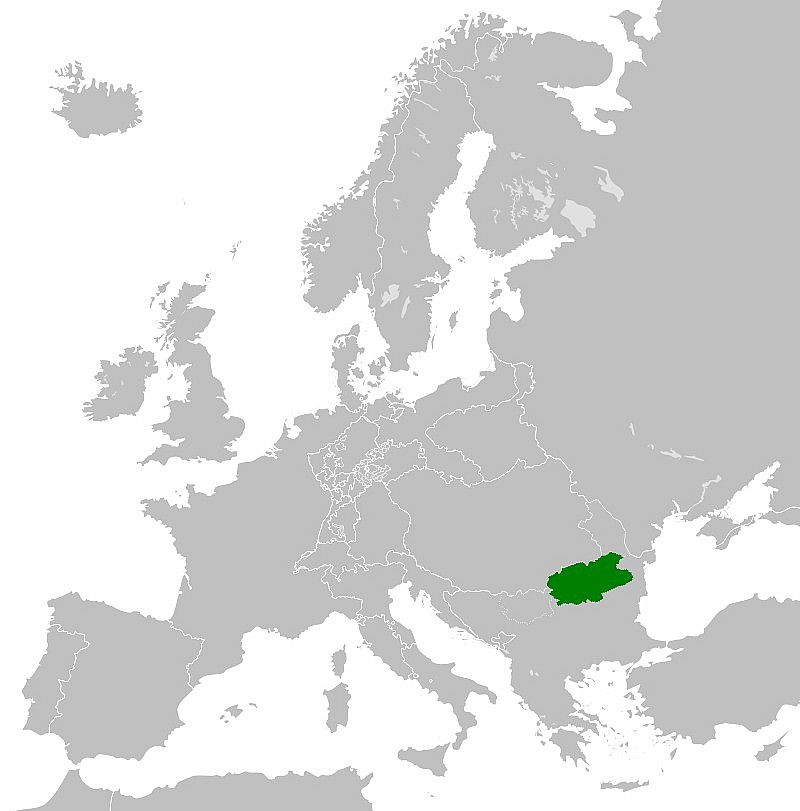 |
| Wallachia (1330–1859) |
Following a local revolt against Hungarian rule, Wallachia was established. In order to form the United Principalities, which eventually gave rise to modern-day Romania, it merged with Moldavia. A border state between Muslim countries in the East and Christian nations in the West, Wallachia saw centuries of bloodshed and conflict.
The war between Mehmed II of the Ottoman Empire and Vlad III (also known as Vlad the Impaler or Vlad Dracula) is the most well-known of these conflicts (among foreigners). Vlad's brutal and cruel rule would cause his Saxon neighbors to despise him. This propaganda had a significant impact on Bram Stoker's decision to write Dracula in 1897.
55. Yugoslavia
Many people associate Yugoslavia with the communist leader Josip Tito, the 1914 murder of Franz Ferdinand, and a bloody civil war in the 1990s. Fewer people are aware that Yugoslavia once belonged to the Austro-Hungarian Empire.
The Kingdom of Serbs, Croats, and Slovenes, which began in 1918, and the Kingdom of Yugoslavia, which began in 1929, are just two of the many incarnations that the area has undergone.
Following World War II, the area was divided into a federation of six republics based on racial and historical distinctions: Bosnia and Herzegovina, Croatia, Macedonia, Montenegro, Slovenia, and Serbia. Under the stern rule of communist and revolutionary statesman Josip Broz Tito, Yugoslavia was largely stable, but ethnic tensions persisted. Because no one was around to put out the fire after Tito's death in 1980, a civil war broke out, with effects that are still being felt today.
Only Serbia and Montenegro were still a part of "the third Yugoslavia" in 1992. Everywhere else had split off following numerous bloody battles. The former Yugoslavia was renamed Serbia and Montenegro in 2003, dropping the name Yugoslavia.
Serbia and Montenegro finally achieved independence in 2006, where they are still today. Both are great destinations for history buffs and are reasonably safe places to visit, particularly in Montenegro.
56. Zanzibar
Zanzibar, a tiny island in the Indian Ocean, has a lengthy past.
The Portuguese converted it to Christianity in the 1500s, and it remained so until the Omani Muslims resisted in the 17th century. By the 19th century, Zanzibar was covered in magnificent palaces constructed for Said bin Sultan, and the slave, sugar, and clove industries were the backbone of the nation's economy.
The British then arrived to abolish slavery and discover "the deepest, darkest Africa." German ships entered the Zanzibar lagoon in August 1885 and demanded their fair share, leaving the Sultanate with only a 10-mile stretch of coastline. In 1890, it and the rest of the island were placed under British protection.
Zanzibar enjoyed complete independence for a brief time in 1963, in December. A month later, the United Republic of Tanzania's Zanzibar and neighboring Tanganyika merged following a communist-led revolution.
Conclusion
The United Nations recognizes 195 countries around the world today. For how long will this list remain the same?
Our global map changes more than you might think. Thanks to geopolitical forces, entire nations come and go. There are countries, republics and regions that, quite literally, have fallen off the map. Some changed names. Others were split into separate entities. Many lost their sovereignty after being taken over by another country. In any case, none are recognized by the international community as existing nations.
FAQs
How many countries have disappeared throughout history?
It is difficult to determine exactly how many countries no longer exist. Historians estimate that hundreds of countries have disappeared over time.
It is difficult to determine exactly how many countries no longer exist. Historians estimate that hundreds of countries have disappeared over time.
What are some famous countries that are no longer around?
Famous countries that no longer exist include the Soviet Union, Yugoslavia, East Germany, Czechoslovakia, and the Ottoman Empire.
Can I find traces of a country that no longer exists?
Absolutely. Landmarks, cultural traditions, and even museums contain traces of countries that no longer exist. Some countries also left an indelible mark on the region's geography, language, and culture.
Why do some countries disappear over time?
There are numerous reasons why countries disappear over time. This can include annexation or unification with another country, social and economic conflicts, natural disasters, economic collapse, and political shifts.
 Top 10 Countries with the Most Delicious and Unique Drinks Top 10 Countries with the Most Delicious and Unique Drinks The clinking of glasses is a great way to meet new people, enjoy time with friends or family, and celebrate the little things in life. |
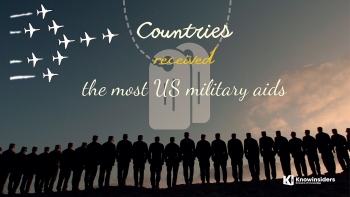 Top 10 Countries Get The Most Military Aid From USA Top 10 Countries Get The Most Military Aid From USA Along with economic assistance, military aid is one of the two primary categories of foreign aid spending. Here are 10 countries that received the most ... |
 Top 15 Countries with the Most Expensive Places To Die Top 15 Countries with the Most Expensive Places To Die Where is the most expensive place of death across the world? If you want to know the burial cost around the world, scroll down! |
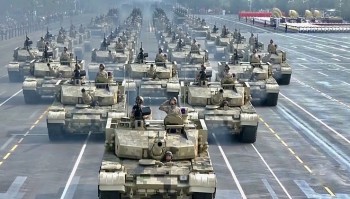 Top 20+ Countries With The Most Strongest Battle Tanks in the World Top 20+ Countries With The Most Strongest Battle Tanks in the World KnowInsiders.com ranked Top 20+ countries by the number of tanks in service right now. |


